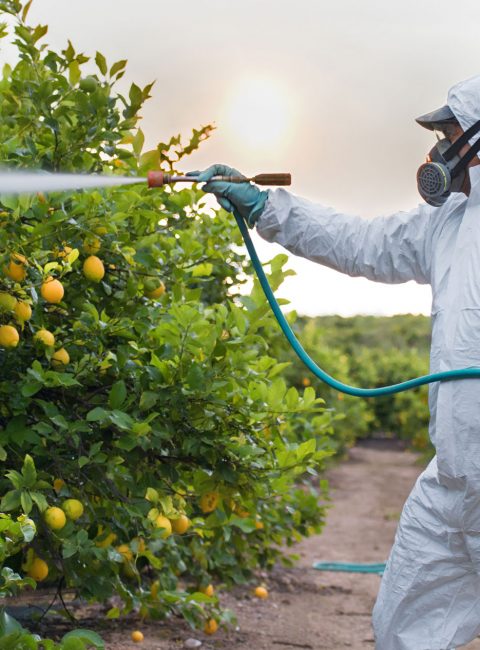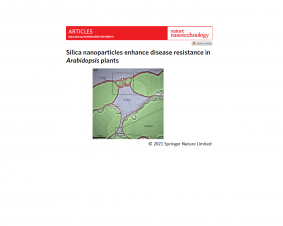 >
Spotlight October 2021: Nanopesticides – a proposal for a risk assessment framework
>
Spotlight October 2021: Nanopesticides – a proposal for a risk assessment framework
The application of so-called “nanopesticides” (see also cross-sectional text Nanomaterials in plant protection products) is said to have two basic advantages: a smaller amount of pesticide is needed for the same agricultural area and the efficacy is improved. This is necessary to grow enough food for a still growing world population. However, this could also entail increased risks for humans and the environment if, for example, these substances could be absorbed significantly better by crops, thus increasing their concentration in food, and/or that they could be absorbed better by humans or livestock, thus contributing to increased body burden.
To this end, an international group of scientists has considered and established a tiered approach to assess the risks to human health (Kah et al., 2021). Taking into account existing guidance documents and regulations (e.g., OECD guidelines), a strategy was developed on how a sustainable use of new nanopesticides could be enabled while considering safety-related issues. Two general principles were distinguished: first, the possibility of using nanoscale packages to deliver the active ingredients (so-called “nanocarriers”), and second, nanometer-sized active agent, such as metals or metal oxides that deliver active ions (e.g., silver or copper), with the nanoparticles usually delivered by protective sheaths made of polymers. For both variants, the critical steps for potential human exposure were identified (active ingredient preparation, field application, and postharvest exposure through food ingestion) and ways to investigate possible toxic effects that may be triggered.
The model shown here consists of 6 steps necessary to holistically describe nanopesticides and their health effects. In addition, the group further highlights important knowledge gaps that should be addressed in the near future.
Original publication:
Kah, M., Johnston, L.J., Kookana, R.S., Bruce, W., Haase, A., Ritz, V., Dinglasan, J., Doak, S., Garelick, H., and Gubala, V. (2021). Comprehensive framework for human health risk assessment of nanopesticides. Nat Nanotechnol 16, 955-964

Weitere Spotlights
Spotlight October 2022: The titanium dioxide debate – why the current ECHA and EFSA hazard classification should be questioned
Due to various reports and scientific studies, titanium dioxide (TiO2)was also banned in Europe this year (2022) for use as a food additive with the indication that it could possibly be carcinogenic to humans. Although no case of tumour induction in humans has been reported since the use of this material in micro but also […]
Read moreSpotlight September 2023: Fishing for raw materials with proteins
The so-called rare earth elements such as neodymium, dysprosium or cerium are elements that are of great importance for the energy transition; among others they serve as components of magnets in generators for electric power generation, act as luminescent materials in energy-saving lamps or as part of the car exhaust catalytic converter. The global production […]
Read moreSpotlight December 2021: Silica nanoparticles improve plant disease resistance
The resistance of plants to various pathogens is often increased in agriculture with various chemicals (“fertilizers”). A new direction is being taken with the use of nanoparticles. These can be sprayed on the plants. In the present study, the model plant Arabidopsis was used to investigate whether silicon dioxide nanoparticles (SiO2) can increase resistance to […]
Read moreSpotlight February 2023: New sustainable and promising method to give cotton textiles an antiviral and antibacterial finish
Textiles have been the subject of research into functionalization for many years, especially also to repel bacteria and viruses. Since the development of nanotechnological processes, there have been many attempts to incorporate UV protection with nano-titanium dioxide, or to provide textiles with anti-bacterial properties with nanosilver (see cross-sectional text “Nanoparticles in Textiles”). But nanosilver has […]
Read more


